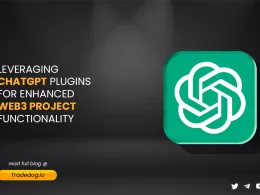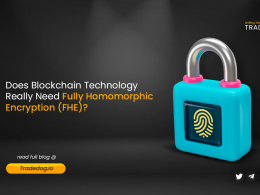Quick Links
Decentralized finance (DeFi) has grown rapidly, attracting billions of dollars in locked-in value. However, this burgeoning space faces a significant challenge: security vulnerabilities. DeFi protocols have been prime targets for hackers, resulting in substantial user losses. In 2023 alone, crypto hacks amounted to ~ $3.94 Bn in stolen digital assets and ~ $507 Mn in Q1 of 2024.
To address these security concerns, a group of Ethereum developers proposed ERC-7265, a novel Ethereum Improvement Proposal (EIP) that introduces a “circuit breaker” mechanism. This mechanism acts as a safeguard, aiming to pause token outflows during potential hacks or unusual market activity.
Understanding the Circuit Breaker Mechanism
The core concept behind ERC-7265 is a circuit breaker, a control system that can temporarily halt a process in case of overload or other issues. In the context of DeFi, the circuit breaker would monitor predefined thresholds for specific metrics. If these thresholds are exceeded, the circuit breaker will automatically pause token transfers from the protocol. This temporary pause offers a critical window for developers and users to investigate the situation and potentially prevent further losses from a potential attack. Imagine a scenario where a large, unusual outflow of funds is detected – the circuit breaker would be triggered, halting the transaction and allowing for immediate investigation.
A key advantage of ERC-7265 is its flexibility. The standard doesn’t dictate a one-size-fits-all approach. Developers can customize the circuit breaker mechanism to align with their specific DeFi protocol’s requirements. This customization can involve setting different thresholds for various transaction types. For instance, transactions deemed higher risk might have stricter controls compared to standard transfers. Additionally, developers can define the duration of the pause or tailor it to specific conditions being met.
Potential Benefits of ERC-7265
The implementation of ERC-7265 holds several promising benefits for DeFi:
Enhanced Security: By pausing token outflows during suspicious activity, the circuit breaker can safeguard user assets and bolster protocol security.
Improved Stability: Halting token transfers during market volatility allows users to address issues proactively, fostering confidence in DeFi protocols.
Reduced Risk: The customizable features enable developers to tailor responses to specific protocol risks, mitigating vulnerabilities and boosting investor confidence.
User Protection: In extreme market conditions or during smart contract exploits, the circuit breaker can prevent substantial losses and protect user assets.
Increased Adoption: Widespread adoption of ERC-7265 can establish a higher security standard, potentially attracting larger institutional investors and fostering trust in DeFi.
Challenges and Considerations
While ERC-7265 presents a promising approach to DeFi security, some challenges need consideration:
Implementation: Flawless implementation of the circuit breaker mechanism is crucial for its effectiveness. A vulnerable mechanism could have negative consequences for the network.
Compatibility: Ensuring compatibility across various DeFi protocols is essential for the standard’s success. The vast diversity of DeFi protocols presents a challenge in this regard.
Community Acceptance: Even with a well-designed proposal, community buy-in is necessary for widespread adoption.
Centralization Concerns: Some worry the circuit breaker could give too much control to those who govern it. Striking a balance between security and decentralization is key.
Mitigating Oracle Manipulation: DeFi relies on external data feeds (oracles). Hackers could manipulate these feeds to trick the circuit breaker and disrupt operations.
Impact on DeFi Security
The potential impact of ERC-7265 on DeFi security is significant. By providing a safety net through the circuit breaker, the standard can help reduce the frequency and severity of DeFi hacks by pausing suspicious outflows to buy time for developers to react and potentially prevent attackers from making away with stolen funds. It can also boost user confidence by using Increased security measures fostered by ERC-7265, potentially leading to wider adoption of DeFi protocols. It can also help attract institutional investors who are often wary of the inherent risks associated with the space.
The Bottom Line
ERC-7265’s circuit breaker mechanism presents a compelling solution for a more secure DeFi future. By acting as an emergency pause button for suspicious token outflows, it can potentially disrupt hacks in progress. This crucial time window allows developers and users to investigate and take corrective actions, potentially saving assets from malicious actors. Furthermore, ERC-7265’s customizable features empower developers to tailor security measures to their specific protocols, fostering a more robust DeFi security landscape. While technical considerations need to be addressed, ERC-7265’s potential to mitigate DeFi risks and bolster user confidence paves the way for a future of DeFi with enhanced security.









